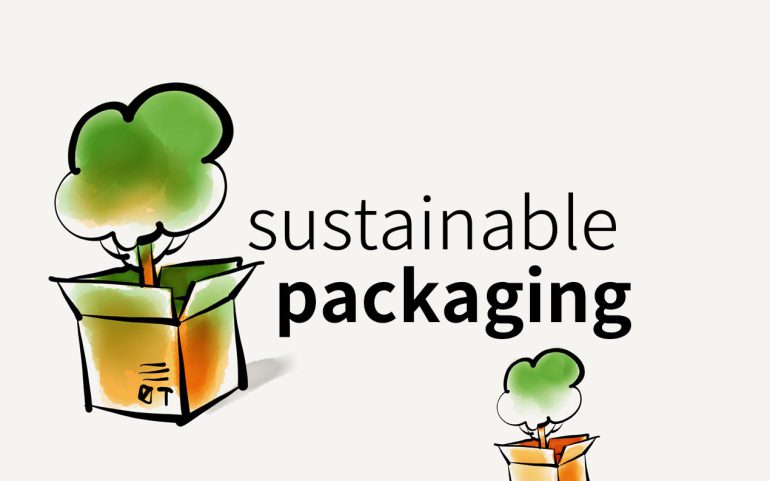Sustainable packaging refers to the design, production, and disposal of packaging in a way that reduces its negative impact on the environment; This can include using recyclable or biodegradable materials, minimizing packaging waste, and designing packaging to be more efficient in its use of resources.
Sustainable packaging may include features such as reusable, compostable or made from renewable resources. It can also consider the entire packaging lifecycle, from sourcing raw materials to disposal or recycling.
Sustainable packaging aims to balance the need for protecting and preserving products with the need to minimize environmental harm. It seeks to create packaging that is less harmful to the environment and benefits society and business.
Ingredients
Some ingredients that are commonly used in sustainable packaging include:
Recycled materials can consist of recycled paper, plastic, or other materials in packaging production. Biodegradable materials can break down naturally over time, reducing waste in landfills. Examples include bioplastics made from plant materials, such as corn starch.
Renewable resources can also be made from sustainable materials such as bamboo, cork, or hemp. Compostable materials can break down in a composting environment, converting them into nutrient-rich soil.
Reusable materials include glass bottles, metal tins or jars, and cloth bags. Low-impact dyes, inks and adhesives are also used to reduce the environmental impact of packaging.
Related Article: Importance Of Packaging; Why Is It More Important Than the Product?
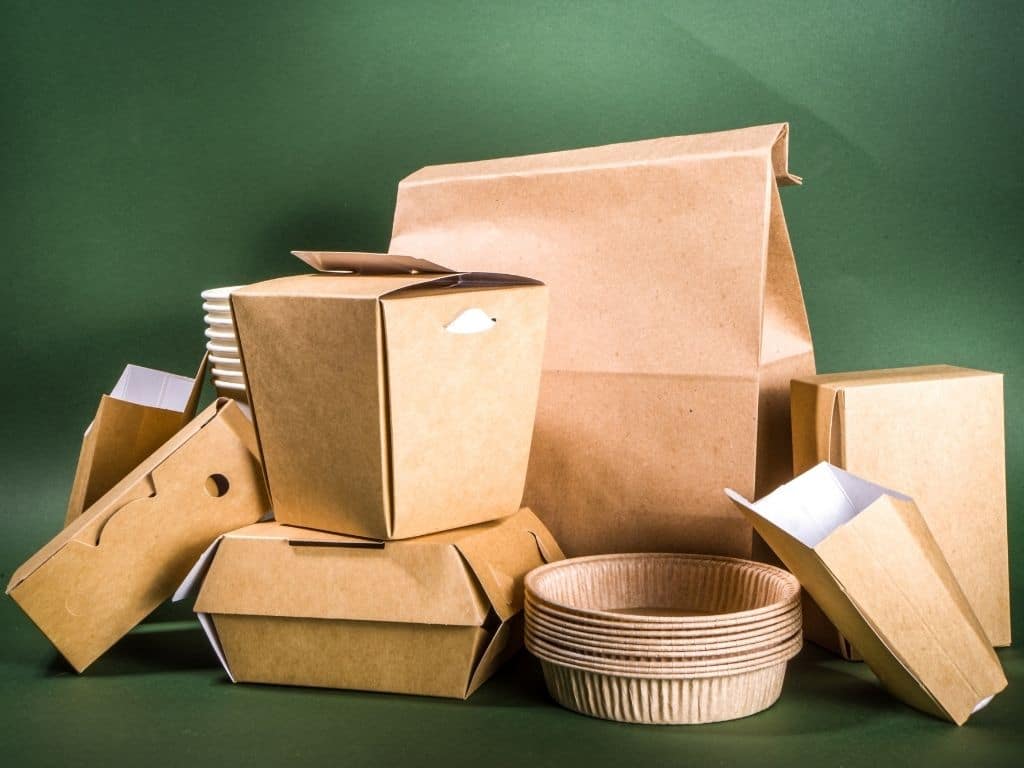
Production process
The production process for sustainable packaging can vary depending on the materials and methods used. Some general steps that may be involved include:
Sourcing of raw materials includes sourcing materials from sustainable and responsible sources, such as recycled, biodegradable, or made from renewable resources. Material production includes converting raw materials into final packaging materials, such as through recycling, molding, or other manufacturing processes.
Designing and creating a packaging prototype to ensure it meets the desired specifications and requirements. Testing the packaging to ensure it meets industry standards and is safe for use; This can include testing for strength, durability, and environmental impact.
Mass production includes producing the packaging in large quantities. The process of getting the packaging to the end user, which can include shipping, warehousing, and other logistics. The process of managing the packaging’s disposal, recycling or composting at the end of its life cycle.
Reusability
Reusability is one of the critical components of sustainable packaging. It refers to the ability of packaging to be used multiple times rather than being disposable or single-use. Reusable packaging can come in many forms, such as:
Reusable containers include glass bottles, metal cans, or plastic containers that can be cleaned and used again for the same or similar products. Reusable bags can include cloth bags or other types of bags that can be used multiple times, rather than disposable plastic bags.
Refillable systems can include packaging that can be refilled with a product, rather than needing to purchase a new package each time. Returnable bottles and crates used for transportation and then returned to be refilled and reused.
Reusable packaging has many benefits for both the environment and society. It reduces waste and pollution and helps conserve resources as it constantly minimizes the need to produce new packaging materials. It can also help reduce costs for businesses and consumers in the long run.
What is sustainable design in packaging?
Sustainable design in packaging refers to designing environmentally friendly packaging with a minimal negative impact on the environment; This can include considering factors such as the materials used, the packaging’s lifecycle, and the packaging’s end-of-life disposal.
This can be achieved by following a design process that includes the following:
Life Cycle Assessment (LCA) to evaluate the environmental impact of the package throughout its entire life cycle, from raw materials to disposal. Minimization of packaging materials and weight to reduce the number of resources used and waste generated.
Use sustainable materials, such as recycled, biodegradable, or made from renewable resources. Design for recyclability, compostability, or Reusability, making it easier for the packaging to be repurposed or disposed of in an environmentally friendly manner.
Use low-impact inks, dyes, and adhesives to reduce the environmental impact of the packaging production process.
It encourages and enables recycling, composting or reusing through clear labelling, instructions or other means. Consider the packaging’s transportation, logistics and distribution, and environmental impact.
Why is packaging sustainability important?
Packaging sustainability is essential for several reasons:
Environmental protection: Packaging is a significant contributor to waste and pollution, and sustainable packaging can help reduce packaging materials’ environmental impact.
Resource conservation: Packaging materials can consume a significant number of resources, such as energy, water, and raw materials. Sustainable packaging can help to conserve these resources by using less material and designing packaging that is more efficient in its use of resources.
Economic benefits: Sustainable packaging can help to reduce costs for businesses and consumers by reducing waste and conserving resources. It can also help to create new market opportunities for sustainable products.
Social benefits: Sustainable packaging can help improve communities’ health and well-being by reducing pollution and waste and promoting the use of safer and healthier materials.
Legal and regulatory compliance: Many countries and regions have laws and regulations that govern the disposal and recycling of packaging materials. Sustainable packaging can ensure compliance with these regulations.
Brand reputation and customer loyalty: Companies that prioritize sustainable packaging can benefit from the improved brand reputation and customer loyalty, as more and more consumers are becoming aware of the environmental impact of packaging and are looking for eco-friendly options.
Overall, sustainable packaging is essential as it helps protect the environment, conserve resources, and promote economic and social benefits while complying with laws and regulations and benefiting the brand reputation and customer loyalty.
Environmentally friendly packaging examples
Here are a few examples of environmentally friendly packaging:
Recycled paper or cardboard can be used for packaging products such as cereal boxes, tissue boxes, and shipping boxes. Bioplastics are made from plant materials such as corn starch and can be used for products such as food packaging and disposable cutlery.
Glass bottles can be used for packaging products such as beverages and can be easily recycled. Metal cans can be used for packaging products such as canned food and can be easily recycled.
Cloth bags can be used as an alternative to disposable plastic bags and can be used multiple times. Compostable packaging is made from mushroom mycelium or other natural fibers that can break down in a composting environment.
Refillable bottles, reusable containers and bags, or returnable and refillable crates used for transportation and then returned to be refilled and reused. Low-impact dyes, inks and adhesives are also used to reduce the environmental impact of packaging.
Related Article: Packaging Symbols; Protect Your Products
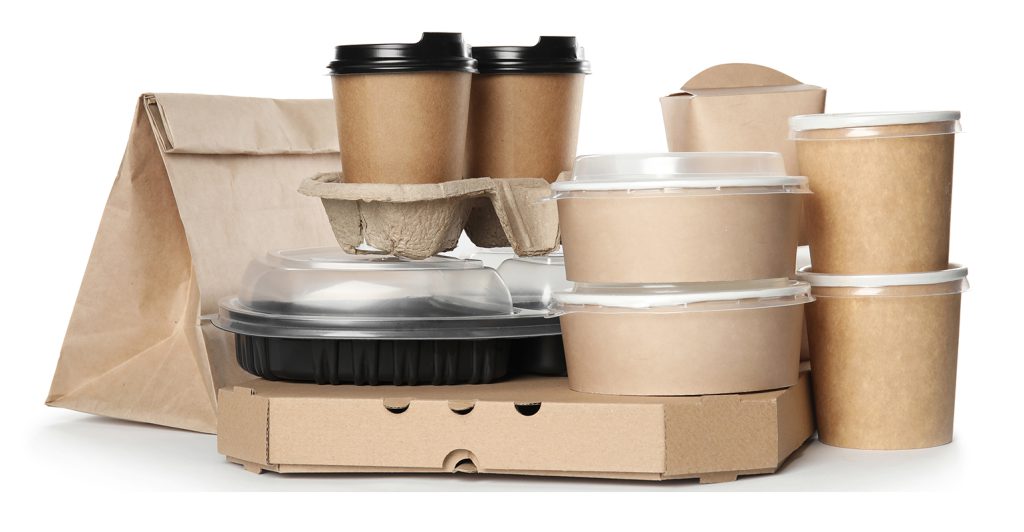
Consumer behavior & packaging sustainability
Consumer behavior plays a significant role in packaging sustainability. The way consumers interact with packaging can have a substantial impact on the environmental effects of packaging materials. Here are a few ways consumer behavior can influence packaging sustainability:
Recycling and proper disposal: When consumers properly recycle and dispose of packaging materials, it can help reduce the amount of waste in landfills.
Reuse and refill: When consumers choose to use and supply packaging, it can help reduce the need for new packaging materials.
Purchase decisions: Consumers can influence packaging sustainability by buying products packaged in sustainable materials and methods; this can create a demand for sustainable packaging and encourage businesses to adopt more sustainable packaging practices.
Product usage: Consumers can also play a role in packaging sustainability by using products in a way that minimizes packaging waste, for example, by using reusable containers or refillable packaging or by using products in a way that reduces the amount of packaging needed.
Education and awareness: Consumers who are educated and aware of the environmental impact of packaging are more likely to make sustainable choices when it comes to packaging.
Overall, consumer behavior can have a significant impact on packaging sustainability. By making sustainable choices, consumers can help to reduce the environmental impact of packaging materials and encourage businesses to adopt more sustainable packaging practices.
Implementing genuinely sustainable packaging in a small brand
Implementing genuinely sustainable packaging in a small brand can be challenging, but it is possible with a well-thought-out plan. Here are a few steps that can be taken to implement sustainable packaging:
Conduct a packaging audit: This involves evaluating the current packaging materials, processes, and supply chain. Identify areas for improvement and set goals for sustainability.
Research sustainable materials and processes: Look into alternative materials and techniques that are more environmentally friendly, such as recycled materials, bioplastics, or compostable materials.
Design for sustainability: Incorporate sustainable design principles into packaging, such as designing for recyclability, compostability, or reusability.
Optimize packaging: Minimize packaging materials and weight; this can reduce the resources used and waste generated.
Work with suppliers and partners: Partner with suppliers and partners who share your commitment to sustainability.
Please communicate with your customers: Educate them about your sustainability efforts and encourage them to recycle, compost or reuse the packaging.
It’s essential to remember that implementing sustainable packaging can take time and may require investment. Still, reducing environmental impact and creating a positive brand image is worth the benefits.
It’s also important to note that sustainability is not only about the packaging itself but also about the entire lifecycle of the product, from sourcing raw materials to disposal or recycling.
Related Article: Packaging Types; Everything You Want To Know
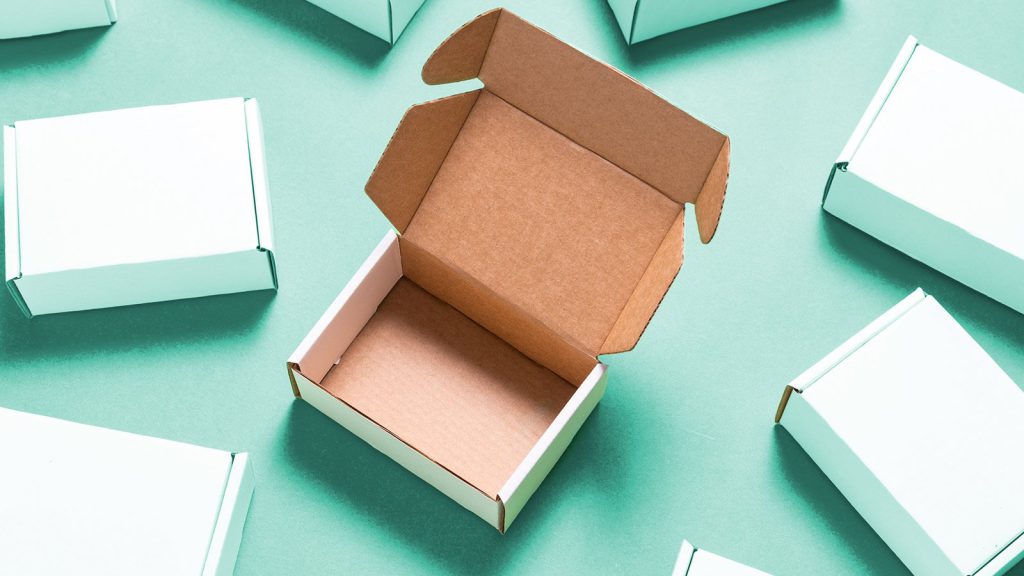
What are the benefits of using eco-friendly packaging for my business?
There are several benefits of using eco-friendly packaging for your business, including:
Eco-friendly packaging can help reduce packaging materials’ environmental impact, such as reducing waste and pollution. Resource Conservation can help to conserve resources, such as energy, water, and raw materials, by using less material and designing packaging that is more efficient in its use of resources.
Economic Benefits can reduce costs for businesses and consumers by reducing waste and conserving resources. It can also help to create new market opportunities for sustainable products.
Eco-friendly packaging can help improve communities’ health and well-being by reducing pollution and waste and promoting the use of safer and healthier materials.
Many countries and regions have laws and regulations that govern the disposal and recycling of packaging materials. Eco-friendly packaging can ensure compliance with these regulations.
Companies that prioritize eco-friendly packaging can benefit from the improved brand reputation and customer loyalty, as more and more consumers are becoming aware of the environmental impact of packaging and are looking for eco-friendly options.
Eco-friendly packaging can be used as a marketing tool to differentiate your business from the competition and appeal to environmentally conscious consumers.
Environmentally Friendly Packaging Materials to Help Your Business Go Green
Many environmentally friendly packaging materials can help your business go green. Some examples include:
Recycled paper and cardboard: These materials can be used for packaging products such as cereal boxes, tissue boxes, and shipping boxes.
Bioplastics: Made from plant materials such as corn starch, they can be used for food packaging and disposable cutlery.
Glass bottles: These can be used for packaging products such as beverages and can be easily recycled.
Metal cans: These can be used for packaging products such as canned food and can be easily recycled.
Cloth bags: These can be used as an alternative to disposable plastic bags and can be used multiple times.
Compostable packaging: These are made from mushroom mycelium or other natural fibers that can break down in a composting environment.
Reusable or refillable packaging: Refillable bottles, reusable containers and bags, or returnable and refillable crates used for transportation and then returned to be refilled and reused.
Low-impact dyes, inks, and adhesives: These can be used to reduce the environmental impact of the packaging production process.
Sugarcane-based materials: These are made from the waste fibers of sugarcane, a highly renewable resource, and can be used for various packaging applications.
Mushroom packaging: This is a new and innovative packaging material made from mycelium, the vegetative part of mushrooms, which can be grown in a lab using agricultural waste. It is biodegradable and compostable. Other eco-friendly packaging materials to consider include:
Waxed paper and cardboard: These materials can be used as an alternative to plastic wraps and bags for food packaging.
Plant-based materials: These materials can be made from a variety of plant-based sources, such as bamboo, hemp, or cork, and can be used for a variety of packaging applications.
Recycled plastic: Plastic can be recycled into new packaging materials, reducing the need for new plastic to be produced and minimizing waste.
Starch-based materials: These can be made from potato, tapioca, or corn starch and used for food packaging and disposable cutlery.
It’s worth mentioning that many of these materials are relatively new and are still in the development stage. Still, they have great potential to be used as eco-friendly packaging materials. In any case, it’s essential to consider the entire packaging lifecycle, from sourcing the raw materials to the manufacturing, transportation and final disposal. This will help ensure that the packaging is truly sustainable.
More about Sustainable Packaging
Sustainable packaging can be applied to various packaging types, including:
Mailers, shipping & retail boxes: These can be made from recycled paper or cardboard, bioplastics, or other sustainable materials. They can also be designed for recyclability, compostability, or reusability.
Inner packaging: This refers to the packaging materials used to protect and cushion the product inside a shipping or retail box; This can include materials such as biodegradable foam, paper or cardboard, or even air-filled packaging.
Protective packaging & void fill: These materials protect products during shipping and storage. These can include biodegradable bubble wrap, paper or cardboard, or even reusable protective packaging such as silicone or rubber.
Shipping accessories: This includes items such as tape, labels, and shipping envelopes. These can be made from sustainable materials such as recycled paper or bioplastics.
Custom packaging: This can include packaging designed and produced specifically for a particular product or business. Custom packaging can be made from various sustainable materials and designed to meet specific sustainability goals.
It’s important to note that sustainable packaging is not only about the materials used but also about the entire lifecycle of the packaging, from sourcing raw materials to manufacturing, transportation and final disposal; This will help ensure that the packaging is.

What are eco-friendly packaging tips?
Eco-friendly packaging tips refer to strategies and practices those businesses can use to reduce the environmental impact of packaging materials and processes.
These tips can help to minimize waste, conserve resources, and create a more sustainable packaging system. Some examples of eco-friendly packaging tips include:
Offer carbon-neutral shipping by offsetting emissions: This can be done by purchasing carbon offsets or participating in a carbon offset program; This helps to mitigate the environmental impact of shipping by investing in renewable energy or other carbon-reducing projects.
Ship items in bulk: This can help reduce the amount of packaging and shipping materials used and the number of individual shipments.
Use sustainable packaging materials that can be repurposed: This can include materials such as recycled paper or cardboard, bioplastics, or other materials that can be easily recycled or repurposed.
Offer a returns program for your empty product containers: This can help to reduce waste by allowing customers to return empty containers for reuse or recycling.
Recycle on behalf of your suppliers and offer shipping-friendly items: This can help to reduce waste and pollution by recycling materials used in the packaging and shipping process.
Work with wholesalers to reduce individual shipments and limit return shipping: This can help to reduce the environmental impact of shipping by consolidating orders and reducing the number of separate shipments.
Reduce the size of your packaging: This can help to reduce the number of materials used and the environmental impact of packaging.
Use compostable packaging and mailers: This can help to reduce waste by allowing packaging materials to break down in a composting environment.
Keep everything the same: It’s essential to make changes gradually so it will be easier to manage and evaluate the results.
Order product samples: This can help to evaluate the eco-friendliness of different packaging materials before making a larger order.
Consider a redesign: This can reduce the environmental impact of packaging by redesigning the packaging to be more efficient and sustainable; This can include things such as reducing the packaging size, using sustainable materials or designing packaging that is easier to recycle or compost.
Adjust your pricing: It’s worth considering adjusting pricing to cover the cost of sustainable packaging and offsetting emissions to make it more affordable for customers willing to pay more for eco-friendly products.
Order small volumes: This can reduce waste by ordering smaller quantities of packaging materials and reducing the amount of excess packaging.
FIFO (‘First in, first out’): This inventory management method is a best practice that can help to reduce waste by using materials that are received first before they expire or become obsolete.
The considerable debate: Compostable vs Recyclable
The discussion between compostable and recyclable packaging centers around the more sustainable option for reducing waste and protecting the environment. Compostable packaging is made from materials that can break down in a composting environment, such as food scraps, yard waste and certain bioplastics.
These materials can be turned into compost, which can be used as a natural fertilizer for plants. Recyclable packaging is made from materials that can be collected, processed, and turned into new products, such as paper, glass, and plastic. These materials can be recycled multiple times, reducing the need for new raw materials.
On the one hand, compostable packaging is seen as a more sustainable option because it can be turned into a helpful resource and doesn’t require the energy-intensive recycling process. However, composting requires specific conditions and infrastructure, and not all places can compost.
Moreover, compostable packaging can end up in a landfill where it will not break down properly and release methane, a greenhouse gas. On the other hand, recycling has been around for a long time and has a well-established infrastructure. However, not all types of plastic can be recycled, and many recycled materials end up in landfills or incinerated.
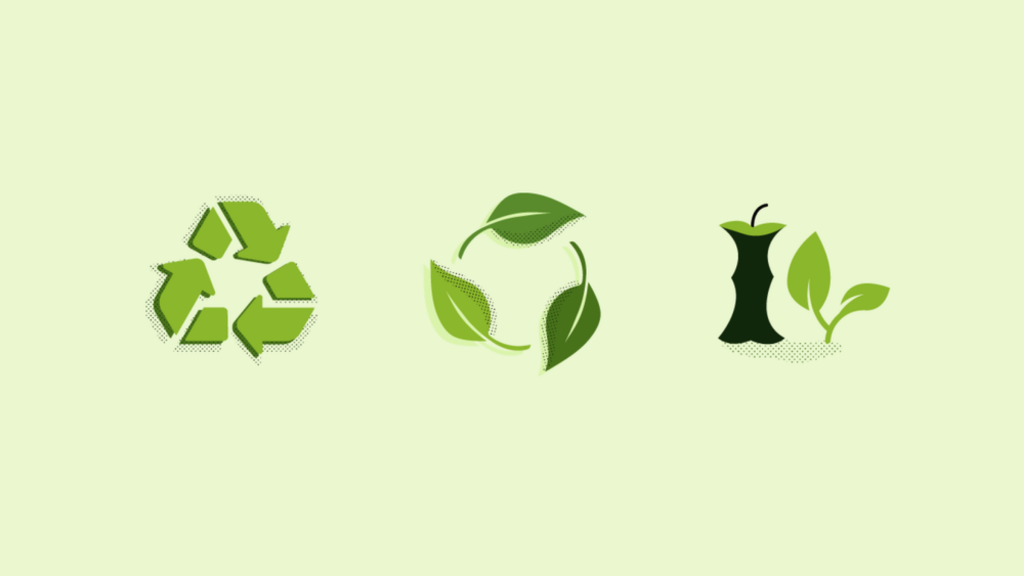
The Advantages and Challenges of Compostable Packaging
Compostable packaging is made from materials that can break down in a composting environment, such as food scraps, yard waste and certain bioplastics. These materials can be turned into compost, which can be used as a natural fertilizer for plants.
One of the advantages of compostable packaging is that it doesn’t require the energy-intensive process of recycling and can be turned into a helpful resource. However, it’s essential to remember that composting requires specific conditions and infrastructure, such as industrial-scale composting facilities, and not all places can compost.
Additionally, suppose compostable packaging ends up in a landfill. In that case, it will not break down properly and release methane, a greenhouse gas, which is why it’s essential to ensure that the packaging is correctly disposed of in a commercial composting facility.
Why choose eco-friendly packaging in the fashion industry?
The fashion industry is a significant contributor to environmental pollution and waste due to the use of non-sustainable materials and the high turnover of fast fashion products. Choosing eco-friendly packaging in the fashion industry can reduce the industry’s environmental impact and create a more sustainable business model.
Some reasons for choosing eco-friendly packaging in the fashion industry include the following:
Reducing Environmental Impact: Eco-friendly packaging can help to reduce the environmental impact of packaging materials, such as reducing waste and pollution; This can include using sustainable materials, reducing the size of the packaging, and using compostable or recyclable materials.
Conserving Resources: Eco-friendly packaging can help to save resources, such as energy, water, and raw materials, by using less material and designing packaging that is more efficient in its use of resources.
Creating New Market Opportunities: Eco-friendly packaging can help to develop new market opportunities for sustainable products, as more and more consumers are becoming aware of the environmental impact of packaging and are looking for eco-friendly options.
Improving Brand Reputation and Customer Loyalty: Companies prioritizing eco-friendly packaging can benefit from enhanced brand reputation and customer loyalty as consumers become more conscious of their purchasing decisions.
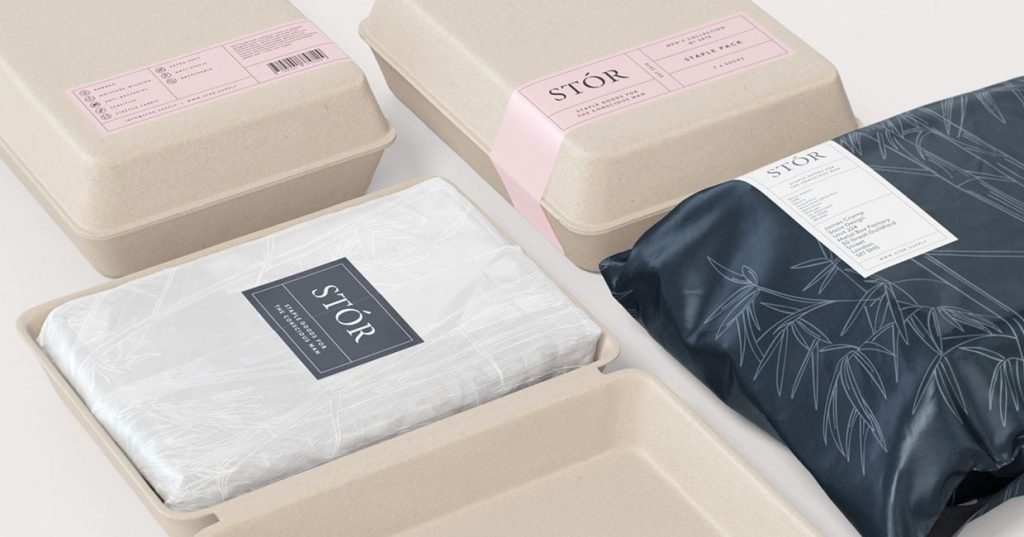
In conclusion, using eco-friendly packaging in the fashion industry can bring many benefits to the environment and business. like reducing the environmental impact, conserving resources, creating new market opportunities, and improving brand reputation and customer loyalty.
It’s a significant step towards a more sustainable business model for the fashion industry.
Can sustainable packaging help reduce food waste?
Sustainable packaging can help to increase the shelf-life of food products by protecting them from light, air, moisture, and other environmental factors that can cause spoilage. This can include using materials such as vacuum-sealed packaging, modified atmosphere packaging, and biodegradable materials.
Sustainable packaging can help preserve food products by cushioning them, absorbing shock, and preventing damage; This can include using materials such as biodegradable foam, paper or cardboard, or even air-filled packaging.
Sustainable packaging can help to improve the overall quality of food products by keeping them fresh and safe to eat; This can include using materials such as vacuum-sealed packaging, modified atmosphere packaging, and biodegradable materials.
Sustainable packaging can help to share information with customers, such as recycling, composting or reuse instructions; This can help customers to dispose of packaging materials and reduce waste properly.
Sustainable packaging can reduce the packaging size, reducing the number of materials used and the environmental impact of packaging.
The global agenda for sustainable packaging
The global agenda for sustainable packaging aims to reduce the environmental impact of packaging materials by promoting waste reduction, using sustainable materials, improved packaging design, circular economy, industry collaboration, consumer involvement, and compliance with laws and regulations.
It is a dynamic and ever-evolving process that seeks to create a more sustainable packaging system and protect the environment.
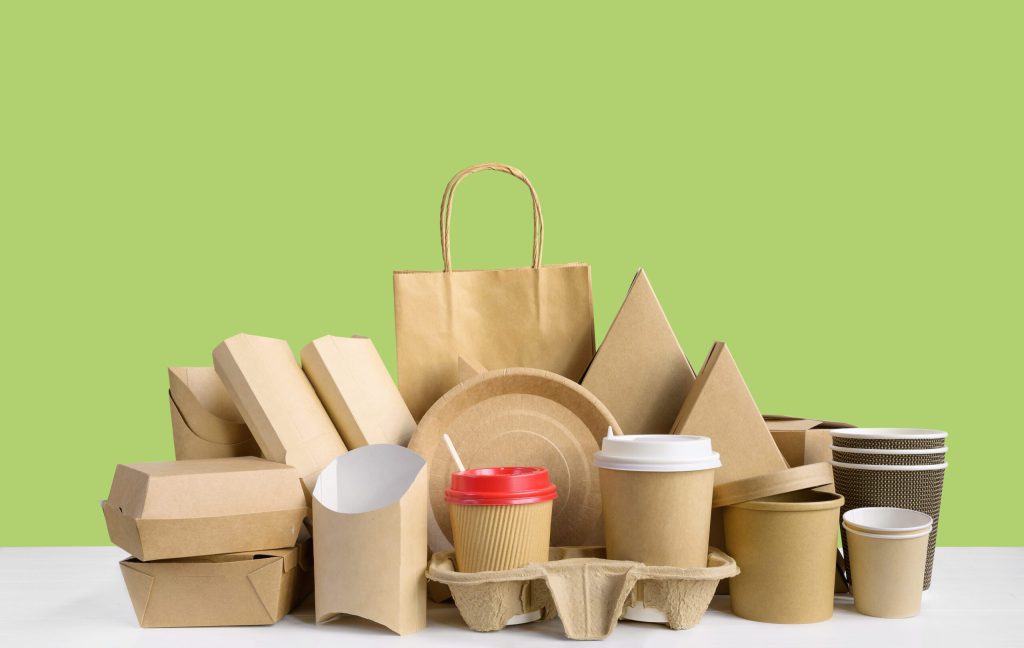
Conclusion
In conclusion, sustainable packaging is a critical aspect of today’s world as it helps reduce the environmental impact of packaging materials and promotes sustainable options.
The global agenda for sustainable packaging focuses on reducing waste, promoting sustainable materials, improving packaging design, promoting a circular economy, encouraging industry collaboration, involving consumers, and ensuring compliance with laws and regulations.
Implementing sustainable packaging practices can benefit both the environment and businesses by reducing waste, conserving resources, creating new market opportunities, and improving brand reputation.
Companies and individuals must consider sustainable packaging options and make conscious choices to promote a more sustainable future.

